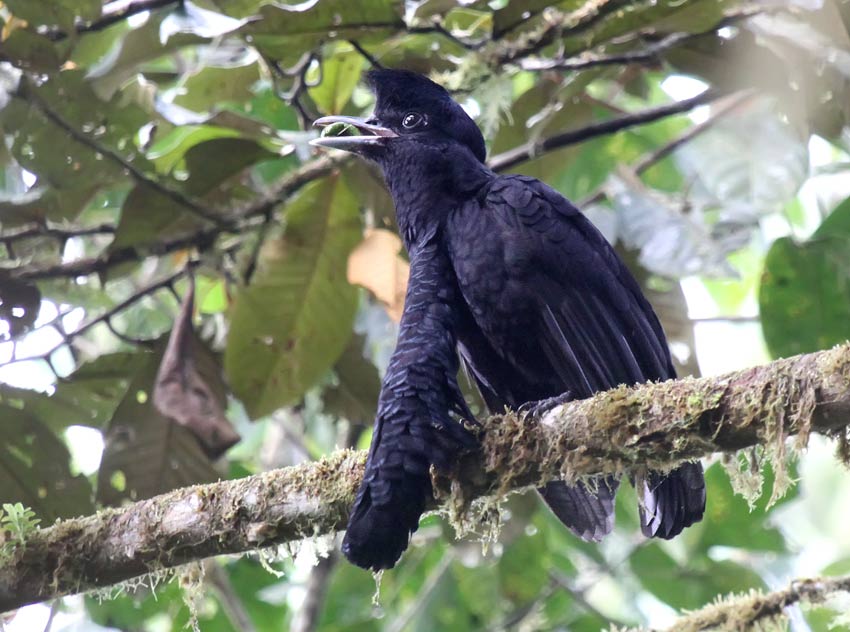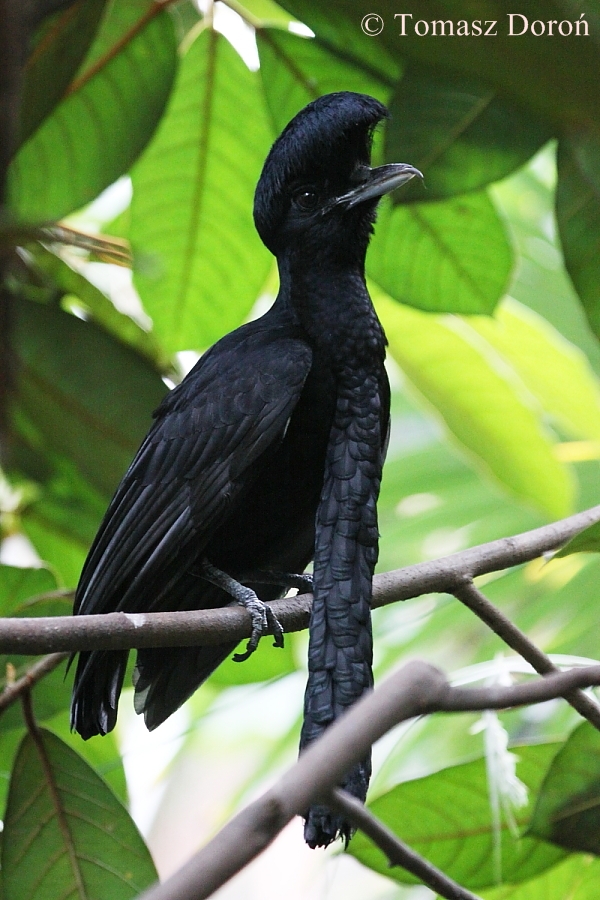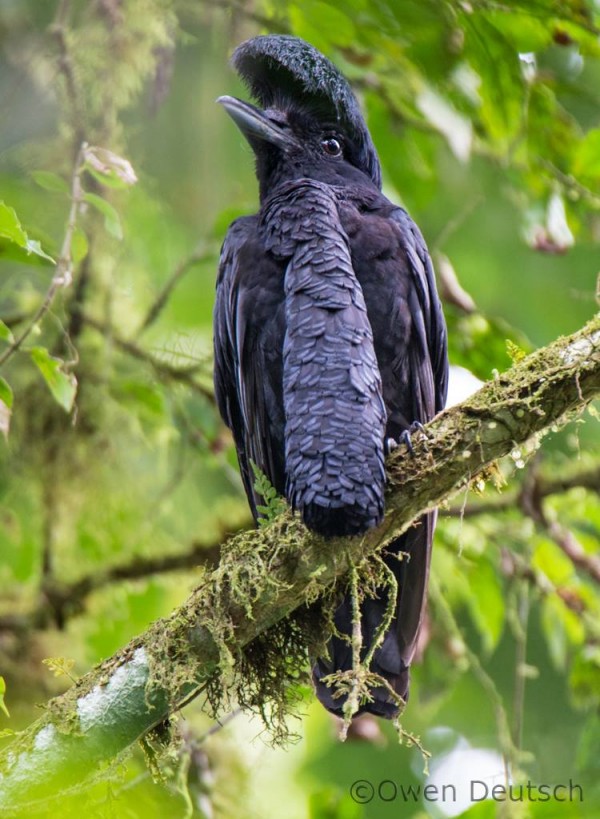
Cephalopterus penduliger
TAXONOMY
Cephalopterus penduliger Sclater, 1859.
OTHER COMMON NAMES
English: Bullbird; French: Coracine casquйe; German: Langlappen-
Schirmvogel; Spanish: Pбjaro Paraguas Caranculado.
PHYSICAL CHARACTERISTICS
Umbrellabirds have sharp and powerful claws to secure good
grips on branches during calling. This group comprises the
largest of the cotingas, being about the size of a crow. As is the
case with most cotingas, the females are smaller and less dramatic
than the males in terms of ornamentation. The males are
entirely black.
Wilhelm Meise describes them as follows: “The inflated
throat sac, which looks somewhat like a pine cone with spread
scales, is moved to and fro like a pendulum; soft sounds are
heard with this movement. With the utterance of the loud,
low-pitched rumbling courtship call, the head is thrown back
and the wattle swings forward.”. The much-widened trachea
enables umbrella birds to utter “terrible roaring” sounds which
have earned them the name of “bullbirds.”
DISTRIBUTION
This species is restricted to the Pacific slope from southwestern
Colombia through Ecuador. They are found in the
foothills between 460 and 5,900 ft (140–1,800 m).
HABITAT
Umbrellabirds usually inhabit the mid-level to upper story of
tall trees.
BEHAVIOR
This species may be an altitudinal migrant, but there are both
highland and lowland populations known to be sedentary. The
call is a plaintive combination between a “roar” and bleating
calf, often occurring in the morning or afternoon. Males may
displace other males from calling perches. Umbrellabirds have
a very characteristic slow-flapping during flight with the crest
laying down flat. Once perched they will often hop clumsily
from branch to branch. Animal prey is often beaten against a
tree branch before swallowing.
FEEDING ECOLOGY AND DIET
The umbrellabirds consume fruits such as berries and palm
fruits and nuts. Larger seeds of the fruits they consume are regurgitated.
This helps regenerate the tropical forests they live
in, as seeds of their preferred food plants are dispersed
throughout the forests. Insects, larvae and some spiders are
taken as well. Animal matter is consumed especially during the
rainy season when fruits are more scarce.
REPRODUCTIVE BIOLOGY
The nest is platform type and built very roughly of loose twigs
such that the single egg or chick can be seen from underneath.
The nest is often located high in a tree fork.
CONSERVATION STATUS
Vulnerable. Global numbers are estimated at less than 10,000
individuals for the species, with populations declining.
The long-wattled umbrellabird is threatened with deforestation
and consequent habitat fragmentation. The habitat fragmentation
is due to logging and agrarian development, such as
livestock ranching, and oil palm and banana plantations. The
geographic range of this species is estimated at 21,000 mi2
(54,000 km2).
SIGNIFICANCE TO HUMANS
Various tribes may use the wattles for ornamentation in their
artifacts.
Photo Gallery of - Long-wattled umbrellabird




 Animalia Life
Animalia Life